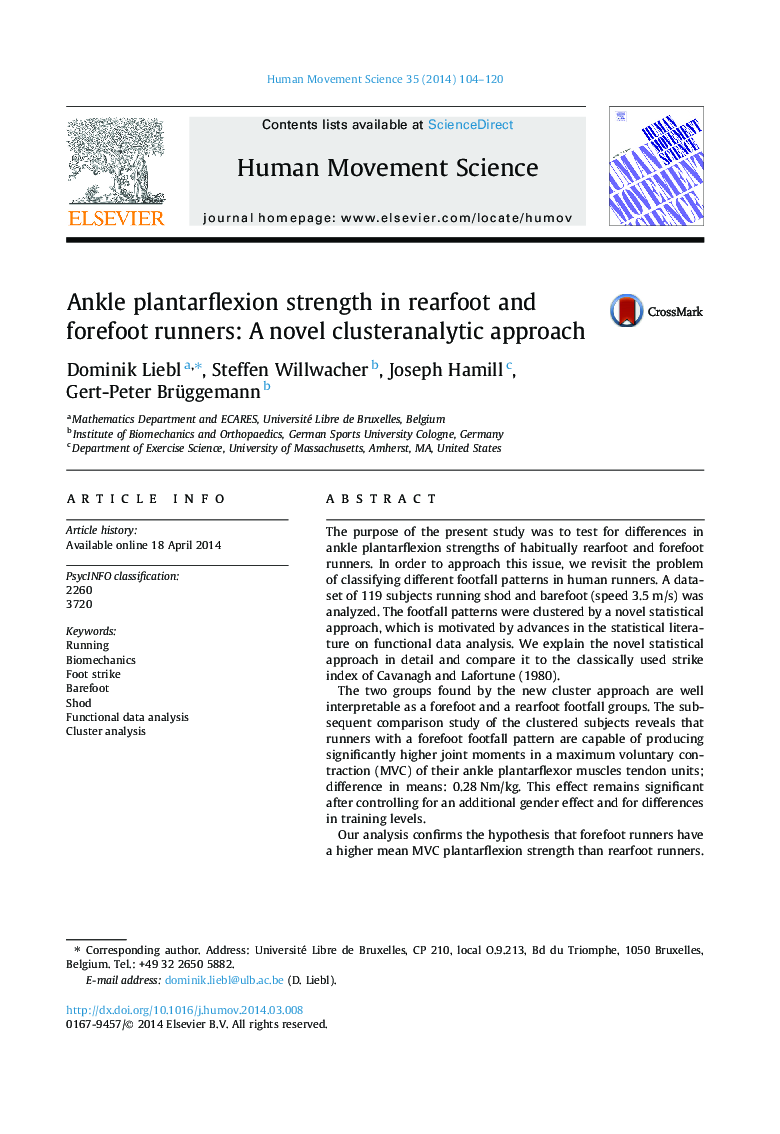| Article ID | Journal | Published Year | Pages | File Type |
|---|---|---|---|---|
| 928312 | Human Movement Science | 2014 | 17 Pages |
•Novel clusteranalytic approach to find groups in habitual footfall patterns.•Found clusters are interpretable as forefoot and rearfoot footfall clusters.•Shod forefoot runners have stronger plantarflexors than shod rearfood runners.
The purpose of the present study was to test for differences in ankle plantarflexion strengths of habitually rearfoot and forefoot runners. In order to approach this issue, we revisit the problem of classifying different footfall patterns in human runners. A dataset of 119 subjects running shod and barefoot (speed 3.5 m/s) was analyzed. The footfall patterns were clustered by a novel statistical approach, which is motivated by advances in the statistical literature on functional data analysis. We explain the novel statistical approach in detail and compare it to the classically used strike index of Cavanagh and Lafortune (1980).The two groups found by the new cluster approach are well interpretable as a forefoot and a rearfoot footfall groups. The subsequent comparison study of the clustered subjects reveals that runners with a forefoot footfall pattern are capable of producing significantly higher joint moments in a maximum voluntary contraction (MVC) of their ankle plantarflexor muscles tendon units; difference in means: 0.28 Nm/kg. This effect remains significant after controlling for an additional gender effect and for differences in training levels.Our analysis confirms the hypothesis that forefoot runners have a higher mean MVC plantarflexion strength than rearfoot runners. Furthermore, we demonstrate that our proposed stochastic cluster analysis provides a robust and useful framework for clustering foot strikes.
